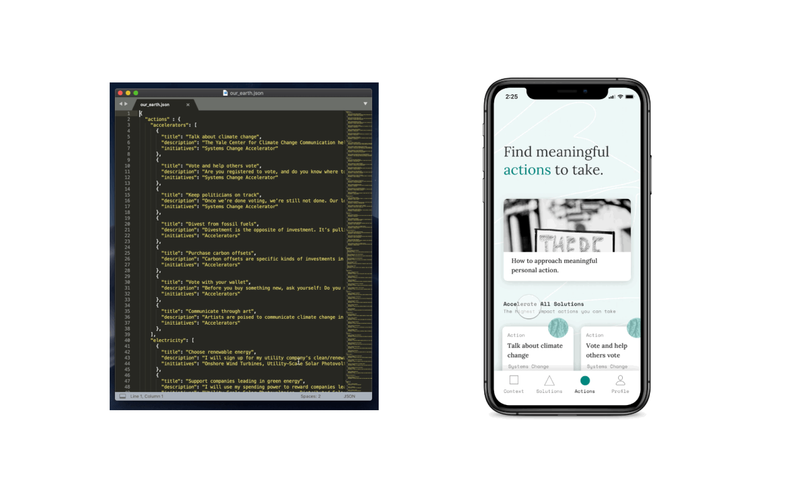Net Zero
Design / Prototype
July 2020
Net Zero is a mobile app concept that combines modular education and behavioral nudges to help users understand what is the most meaningful climate action they can take as an individual.
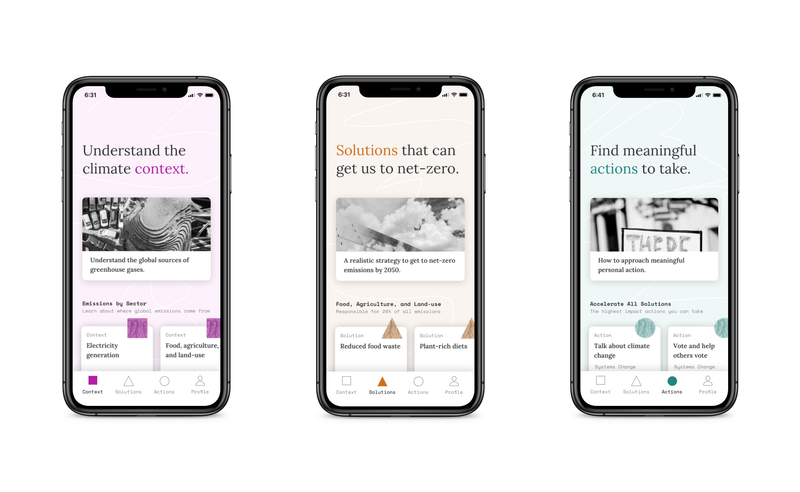
Climate change is one of the biggest challenges of our life time but it can be daunting to figure out where to start when approaching something so enormous. Net Zero is a mobile app concept that combines guided learning and behavioral nudges to help users take individual action and see how they fit into the bigger picture.
Background
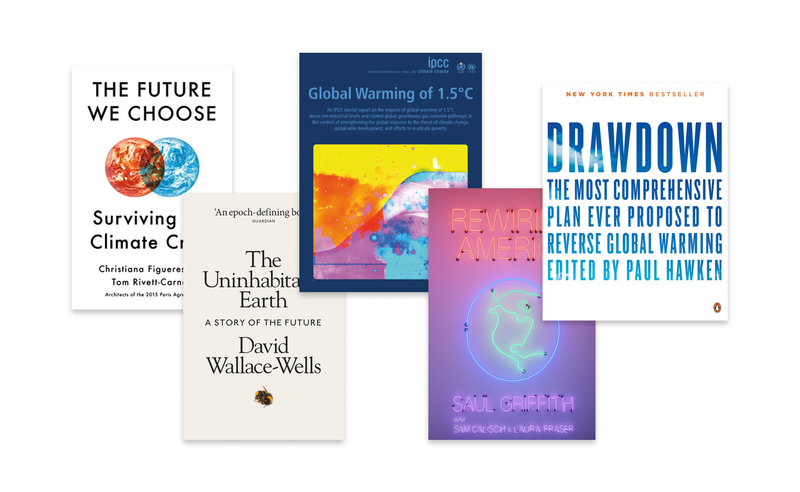
Climate change has always been an issue that I’ve felt like I should be doing more about. In the past, I would often get my information from friends or the news about something I should be doing more or less of. But with such a complex problem and the prevalence of greenwashing, I never knew if the changes I made actually mattered. During my year studying at CIID, I decided this was a good time to really dive deep into primary literature and science about climate change.
During the three weeks of the GUI course during the CIID Interaction Design Programme in 2020, we were asked to design an interactive narrative about a topic of our choice. This seemed like a great opportunity to synthesize a lot of my learnings over the last year.
For this project, much of the primary science came from the IPCC Global Warming of 1.5°C Report. The Project Drawdown 2020 Review and Saul Griffith’s Rewiring America Handbook provided great frameworks on systems-based solutions. “The Future We Choose” by Christiana Figueres provided a lot of the initial inspiration around meaningful individual climate actions. Francesca Desmarais, a climate designer in the CIID network, provided guidance throughout the project.
Concept
Net Zero is a mobile app concept that combines guided learning and behavioral nudges to help users take individual action and see how they fit into the bigger picture. The mobile app provides its user with three main pillars of information – content, solutions, and actions – bookended by an onboarding section and a user profile section.
In order to nudge a user to action, it uses behavioral strategies such as social proof and choice simplification to address common cognitive biases such as hassle factor and choice paralysis.
Onboarding Narrative
The onboarding narrative sets the tone for the rest of the app. It stresses the importance addressing climate change, acknowledges the difficulties that an individual might face in trying to take action, and offers a framework that reduces the hassle factor.
Context
This section provides the basic context and science around climate change. It provides information on different greenhouse gas emissions, their effect on warming, and how much certain human activities contribute to global emissions. The goal is to provide a quantitative sense of the big picture.
An introduction narrative provides an entry point and framing for this section. The user can then freely explore emissions by source or greenhouse gases type to learn more about each.
Solutions
If the previous section offered scientific context on the problem space of global warming, this section provides the climate science community’s latest understand of the solution space. The goal is to provide the user with a sense of all of the changes that society would need to make and how much each change contributes to reaching net zero emissions.
Like the previous section, an introductory narrative provides the entry point and framing. User can then freely browse through different solutions by sector.
Actions
While the previous two sections provides the education for what likely needs to happen on a societal scale to address climate change, this section provides actionable steps an individual can take that ladder up to those societal changes. Some of them relate to a specific solution or economic sector of emission (e.g., eating 5 meatless meals a week contributes to the solution space of “plant-based diets” and the problem space of “Food, Agriculture, and Land-use”). Others are accelerators to pave the way for systemic change across multiple solutions (e.g., writing a letter to your congress person).
Profile
Lastly, the profile section allows you to personalize your climate education and action. By inputting a few pieces of personal information, actions can be tailored to your location, skills, or resources. You can commit to specific climate actions and share your commitments with friends to build social accountability.
Process
When I decided this topic, I worked in parallel to develop a script and create an information architecture framework. Through feedback from friends and classmates, I went through a few iterations on both until I landed on a concept direction that felt clear and compelling.
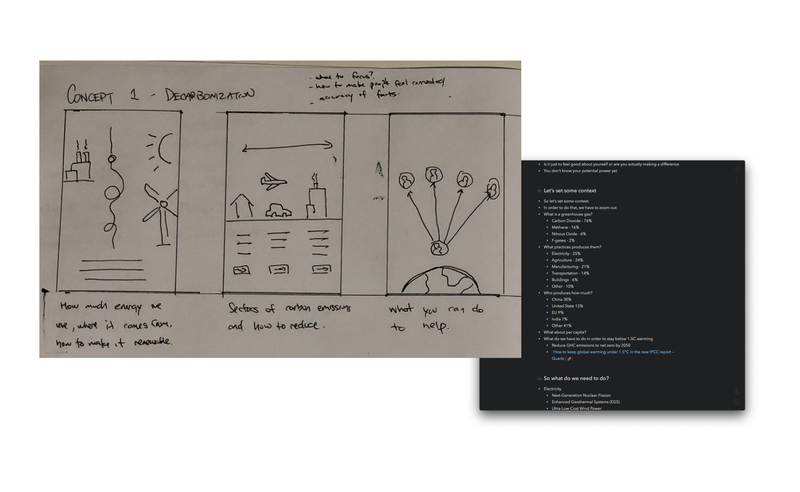
Digital prototyping started with very rough ideas and a more polished visual style was applied when content and architecture started to solidify. The motivation was to combine an engaging aesthetic with plain language and simple data visualizations to make to more appealing to engage with climate science. Even with the initial visual style was clear, feedback from users helped to inform the design and content.
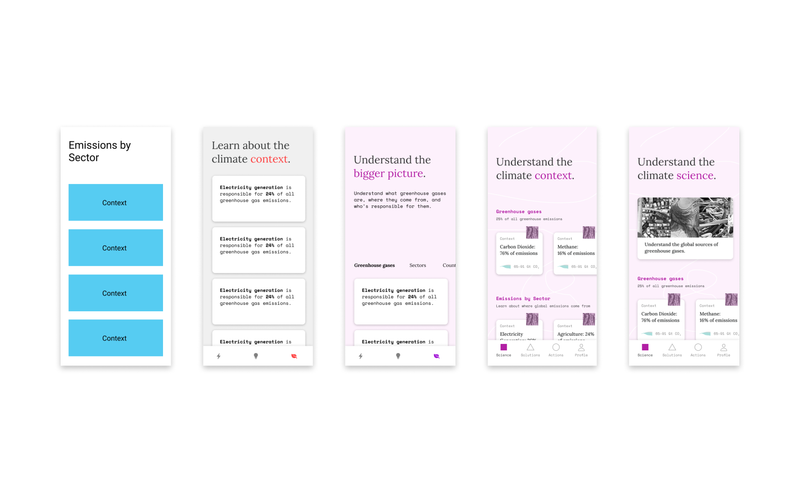
While many of the simpler interactions could be prototyped in Figma, I brought the designs over to Origami to prototype some more complex and engaging interactions.
Data-driven designs was instrumental in bringing a concept like this to life. A lot of time was spent gathering content from research sources and fed into the app as JSON data. This really helped users to get a feel for what it would be like to explore the complexity of the problem, solution, and action spaces.
